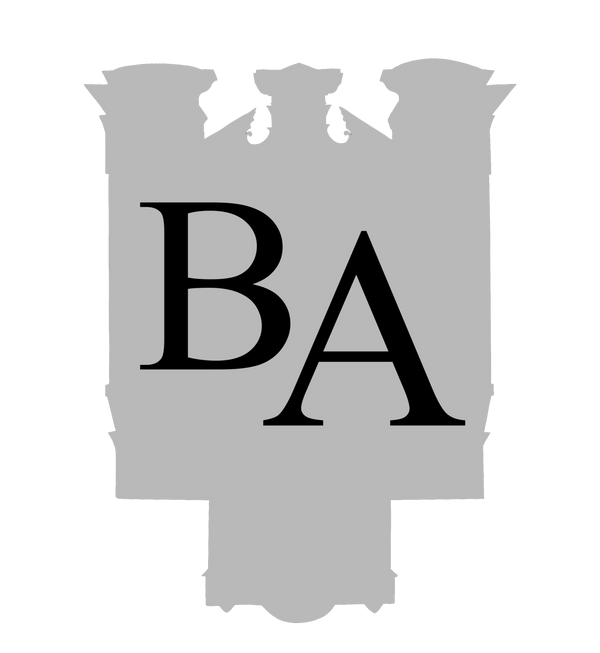
Royal Hospital School Grand Organ
Built by Hill, Norman & Beard 1933 64/IVP
About
The Royal Hospital School is an independent co-educational boarding and day school for 11-18 year olds, providing a full and broad education enriched by a unique naval heritage. The School was originally founded in 1712 in Greenwich, London, before it moved to its spectacular site in Holbrook set in 200 acres of Suffolk countryside overlooking the River Stour in 1933. The School has continued to develop its spectacular purpose-built site and grow in size and reputation to become one of East Anglia's leading independent schools.
In 1933, the Royal Hospital School in Holbrook commissioned the construction of its Grand Organ, an instrument whose current replacement value exceeds £2,000,000. The chapel housing the organ measures 220 feet in length, 64 feet in width, and 62 feet in height, with the instrument itself remaining incomplete by one planned pedal mixture stop.
The contract for the organ was awarded to the renowned firm of William Hill and Son, and Norman and Beard Ltd, at a cost of £7,098. Job No. 2878 was conceived on a grand scale, with thick ivory keys, four large expression boxes, and a tonal design tailored to accompany the school’s vigorous singing. Notable features include a variety of strings, reeds, mutations, and an imposing pedal division, culminating in a thunderous 32ft Double Ophicleide. These components are concealed behind Britain’s largest organ grille, within an acoustic offering a seven-to-eight-second reverberation. Despite its refinement, the organ has endured challenges, including a fire in 1983 that destroyed the chapel’s Robson organ and necessitated extensive cleaning, as well as flooding in 1998 that damaged the Ophicleide wind chest and required substantial restoration work.
Today, the Grand Organ remains a centrepiece of the school’s musical life and a recognised historic asset, holding a Grade One historic organ certificate from the British Institute of Organ Studies. The Royal Hospital School was granted Accredited Institution status by the Royal College of Organists in 2020, reflecting its commitment to organ tuition. Under the stewardship of its current Director of Music, the instrument continues to be maintained in its original specification and is regularly heard in both educational and recital contexts.
Stoplist
-
Pedal
Double Open Wood 32'
Open Wood 16’
Open Diapason 16’
Bourdon 16’
Violone 16’
Dulciana 16’
Octave 8’
Principal 8’
Bass Flute 8’
Ophicleide 32’
Ophicleide 16’
Trumpet 16’
Posaune 8’
-
Choir
Double Dulciana 16’
Open Diapason 8’
Orchestral Flute 8’
Viole da Gamba 8’
Dulciana 8’
Muted Viol 8’
Spitz Flute 4’
Harmonic Flute 4’
Octave Quint 2 2/3
Tierce 1 3/5
Septieme 1 1/7
Piccolo 2’
Oboe 8’
Tremulant
-
Great
Double Open Diapason 16’
Open Diapason I 8’
Open Diapason II 8’
Open Diapason III 8’
Clarabella 8’
Octave 4’
Principal 4’
Wald Flute 4’
Twelfth 2 2/3’
Fifteenth 2’
Mixture IV
Contra Tromba 16’
Tromba 8’
Octave Tromba 4'
-
Swell
Contra Viol 16’
Open Diapason 8’
Stopped Diapason 8’
Salicional 8’
Vox Angelica 8’
Gemshorn 4’
Lieblich Flute 4’
Nazard 2 2/3’
Fifteenth 2’
Mixture IV
Double Trumpet 16’
Trumpet 8’
Trompette 8’
Clarion 4’
Tremulant
-
Solo
Harmonic Flute 8’
Cor de Nuit 8’
Viole 8’
Voix Celeste 8’
Unda Maris 8’
Concert Flute 4’
Orchestral Oboe 8’
Clarinet 8’
Orchestral Horn 8’
Tuba 8’
Tremulant
-
Couplers
Solo to Pedal
Swell to Pedal
Great to Pedal
Choir to Pedal
Swell to Choir
Solo to Great
Swell to Great
Choir to Great
Swell Octave
Swell Unison Off
Swell Sub Octave
Solo to Swell
Solo Octave
Solo Unison Off
Solo to Choir
Choir Octave
Choir Unison Off
Choir Sub Octave
-
Combinations
Great & Pedal Pistons Combined
Doubles Off
Limited Stop Demo Version Stoplist
-
Pedal
Bourdon 16'
Bass Flute 8'
-
Choir
Viola Da Gamba 8'
Flute Harmonique 4'
Quintflote 2 2/3'
-
Great
Open Diapason 8' No.2
Octave 4'
Fifteenth 2'
Contra Tromba 16'
-
Swell
Stopped Diapason 8'
Salicional 8'
Vox Angelica 8'
Principal 4'
Fifteenth 2'
Trumpet 8'
-
Solo
Harmonic Flute 8'
Orchestral Oboe 8'
Images


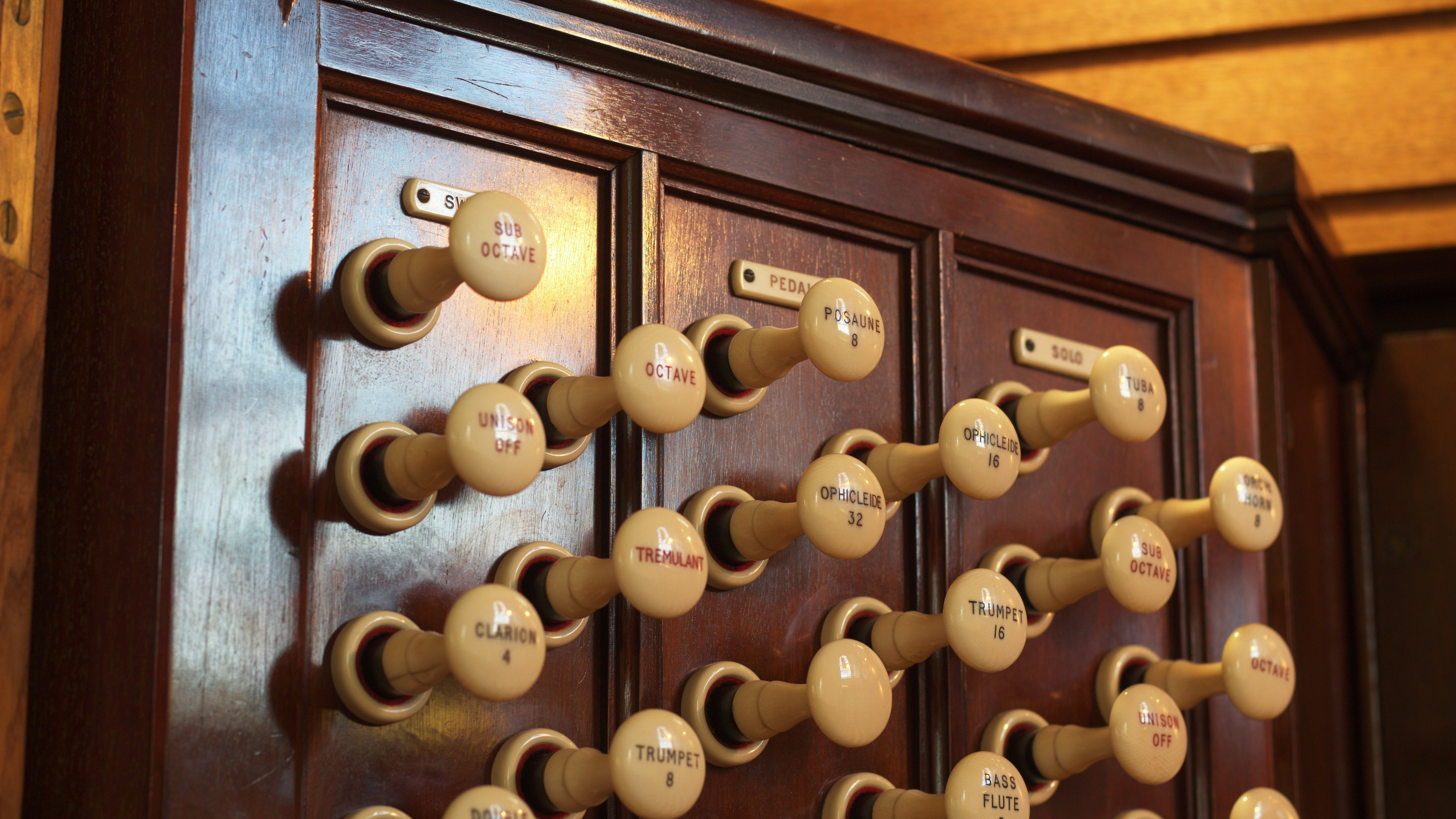
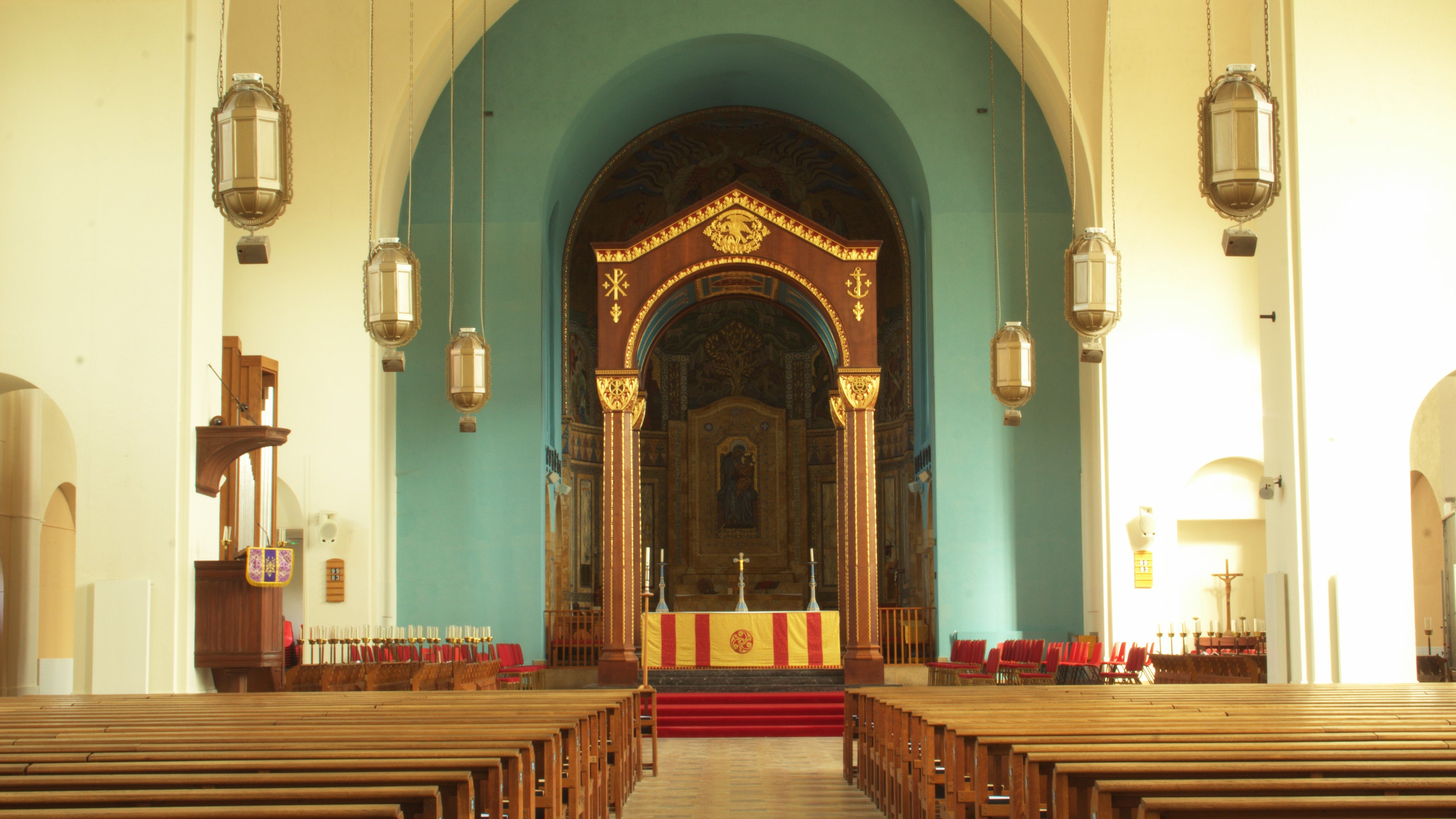
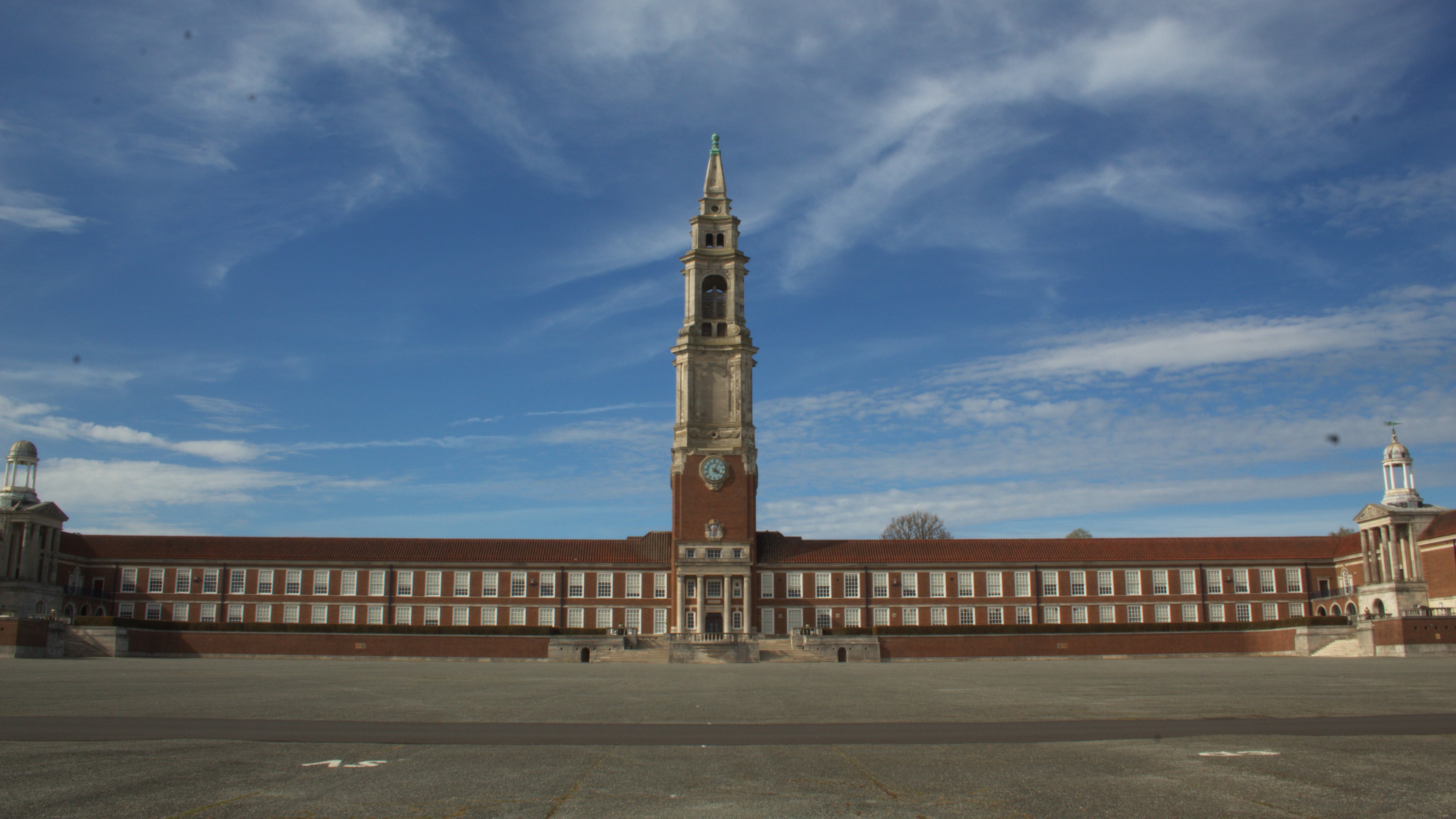
Youtube Demonstration
Screenshots
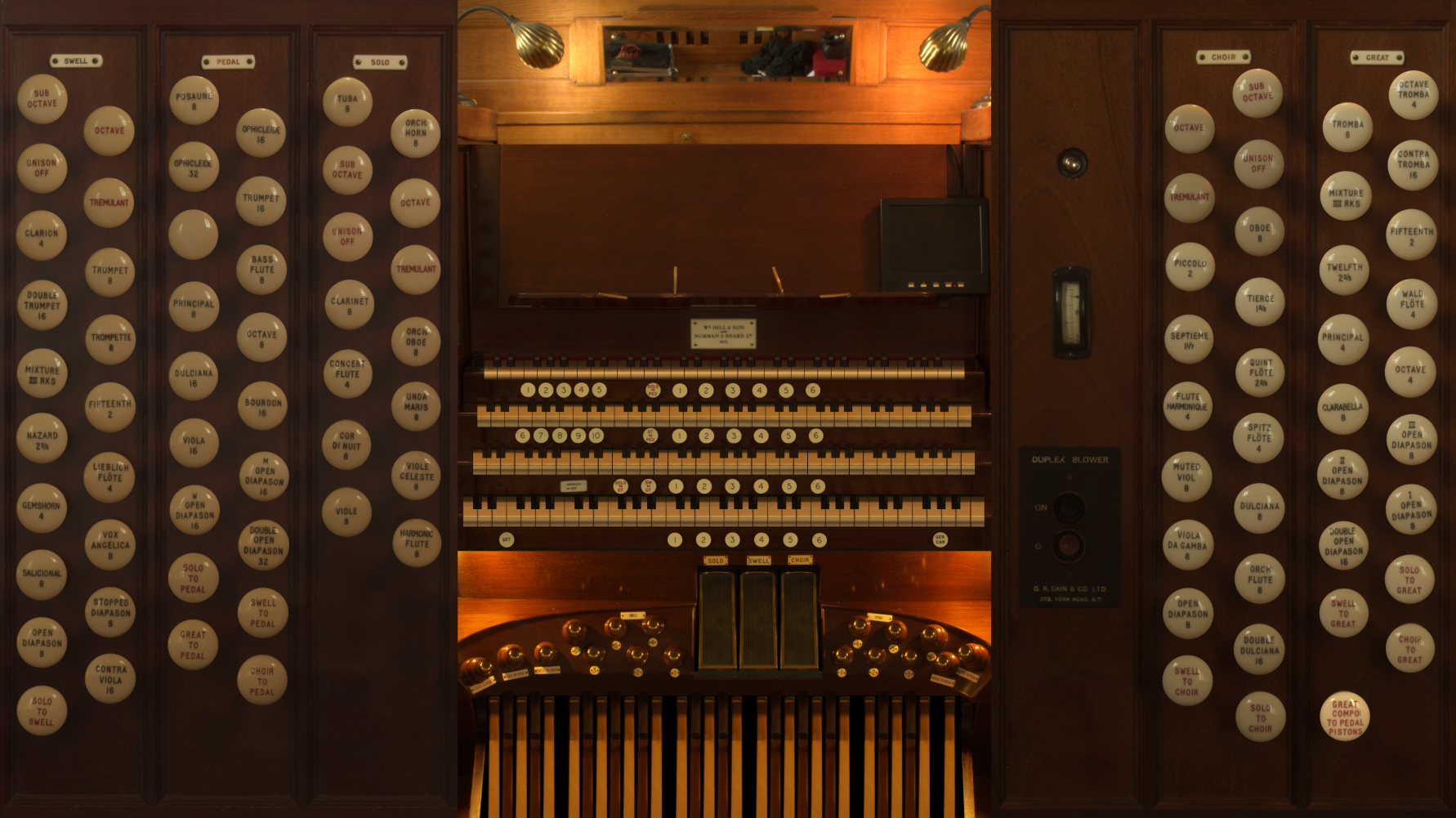
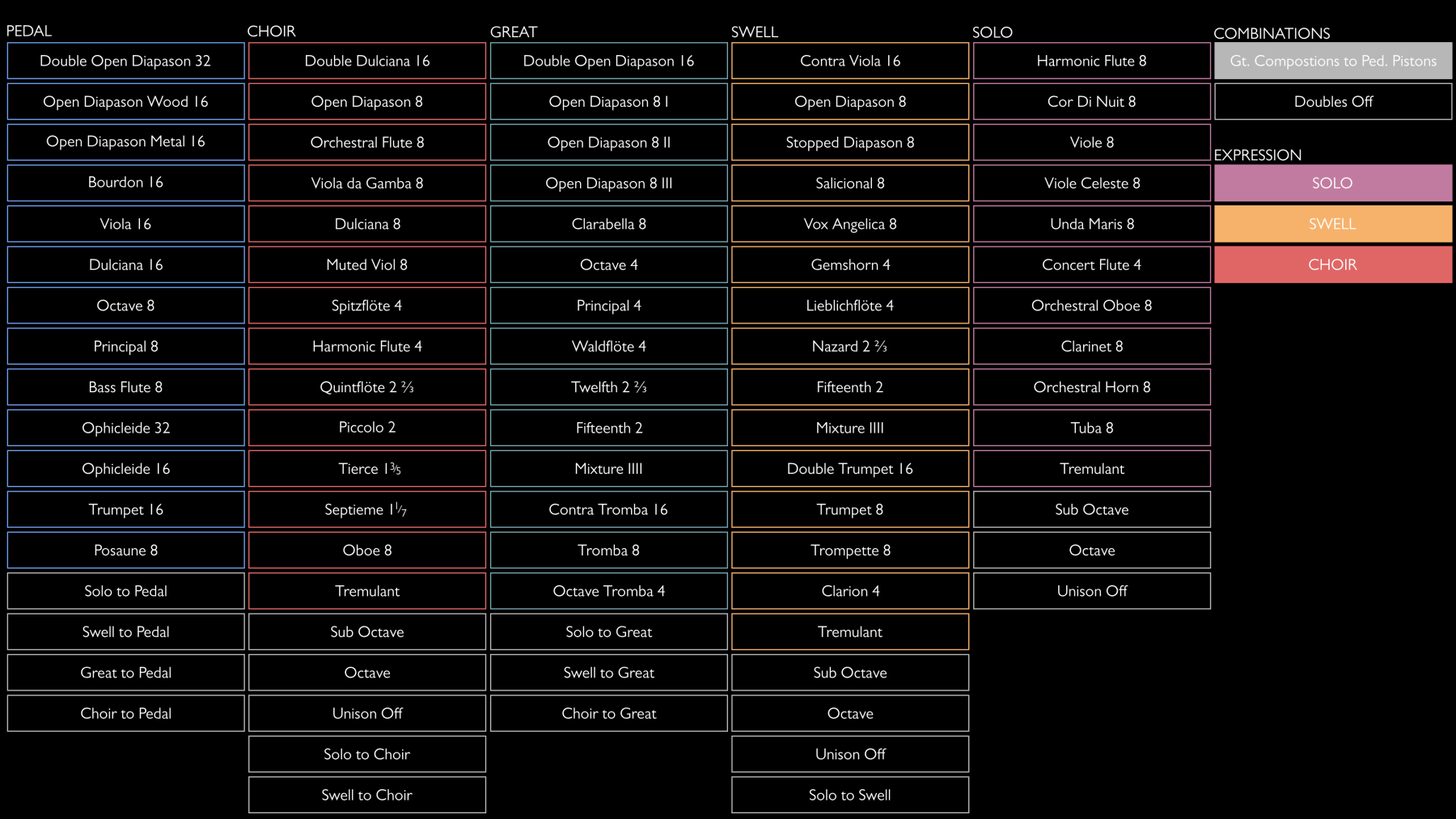

Technical Details
Sample Rate - 48 kHz
Bit Depth - 24 bit
Channels - 6 (x3 Stereo channels - Close, Front & Rear)
Reverb Tail - c. 7.0s
Tremulant Model - Sampled Chromatically
Compatible software - Hauptwerk Version 4.2 or higher
Memory Requirements (Lossless Compression):
24-Bit, 6 Channels - 90 GB
16-Bit, 6 Channels - 45 GB
24-Bit, 4 Channels - 60 GB
16-Bit, 4 Channels - 30 GB
24-Bit, 2 Channels - 30 GB
16-Bit, 2 Channels - 15 GB
Demo Version (Limited Stops, See available stops above) - Free
Note: If you purchase the two week trial and wish to purchase the full version after, please contact me and I will provide you with a discount code that will deduct the cost of the trial from the full version.
User Guide v1.1: Download Link
Updates
Last Update: 4th September 2025
Downloads: Encrypted Trial Version 1.1
Release Notes:
1.1 - Tuning Slider added
